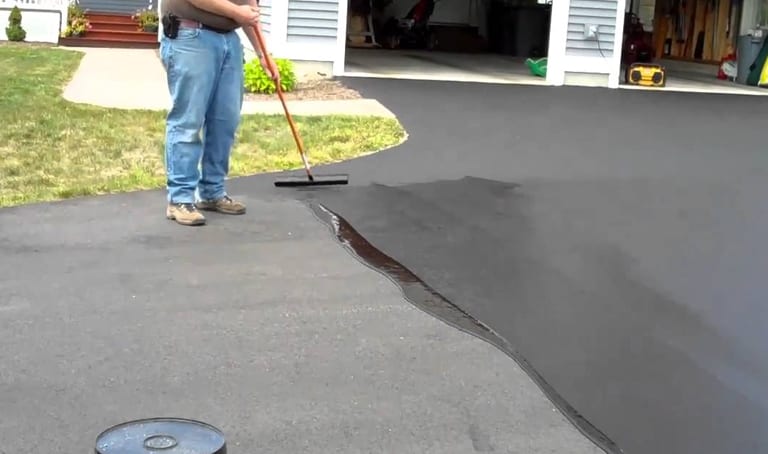Discover the Power of Business Car Park Leading and Asphalt Sealing
Discover the Power of Business Car Park Leading and Asphalt Sealing
Blog Article
Warm Mix Asphalt: A Sustainable Remedy for Pavement
Warm Mix Asphalt (HMA) has arised as a leading lasting choice for pavement options, supplying a myriad of ingenious modern technologies and environmental benefits. As the demand for environmentally friendly building and construction practices expands, exploring the nuances of HMA's sustainability can offer beneficial insights right into the future of pavement solutions.
Environmental Benefits of Warm Mix Asphalt

Moreover, Warm Mix Asphalt assists to alleviate metropolitan warmth island effects. Its dark shade takes in sunlight, decreasing the amount of heat showed back into the environment contrasted to lighter-colored sidewalks. This can decrease ambient temperatures in metropolitan locations, reducing the demand for air conditioning and ultimately lowering energy usage.
Furthermore, Warm Mix Asphalt contributes to improved stormwater administration. Its porous nature enables water to recharge and penetrate the sidewalk groundwater materials, reducing overflow and the risk of flooding. These environmental benefits make Hot Mix Asphalt a lasting option for paving highways and roads.
Energy Performance in HMA Production
Is energy effectiveness a crucial consider the production of Warm Mix Asphalt (HMA)? Definitely. Energy plays a considerable duty in the production of HMA, influencing both cost and ecological sustainability. One key aspect of energy performance in HMA manufacturing is using cozy mix asphalt (WMA) modern technologies (regrading). WMA permits the mixing and placement of asphalt at lower temperature levels contrasted to typical warm mix asphalt, causing minimized energy usage throughout production. This procedure not only lowers gas usage yet additionally decreases greenhouse gas emissions, making it an extra environmentally friendly alternative.
Additionally, advancements in plant innovations have brought about even more energy-efficient HMA production procedures. Modern plants are developed with features like recycled asphalt pavement (RAP) processing capabilities, reliable burner systems, and boosted insulation, all adding to power savings. By maximizing energy use in HMA production, the industry can minimize its carbon footprint while preserving premium sidewalk products. Power performance is, as a result, a crucial factor to consider in making certain the sustainability of Warm Mix Asphalt manufacturing.
Recyclability of Warm Mix Asphalt
The recyclability of Hot Mix Asphalt (HMA) is a crucial element of its sustainability and long-term ecological effect. HMA is one of the most recycled materials in the USA, with over 100 million loads of recovered asphalt sidewalk (RAP) being recycled each year in new sidewalk building and construction. Recycling HMA offers a number of environmental advantages, such as reducing the requirement for virgin materials, decreasing power consumption throughout manufacturing, and lowering the quantity of waste sent to garbage dumps.
The procedure of reusing HMA involves grating the existing sidewalk, crushing it into smaller items, and mixing it with new aggregate and asphalt binder to develop a recycled mix. This recycled mix can commonly perform as well as and even better find more info than conventional HMA, while calling for less basic materials and creating reduced greenhouse gas emissions. By integrating RAP right into brand-new sidewalk projects, road firms can conserve natural deposits, reduce prices, and lessen the environmental impact of road building regrading and upkeep tasks. Generally, the recyclability of HMA plays a significant role in promoting lasting methods within the pavement sector.

Long-Term Efficiency of HMA
Asphalt pavements demonstrate longevity and durability over an extensive period, showing the lasting performance of Hot Mix Asphalt (HMA) The long life of HMA can be connected to its capacity to endure hefty website traffic tons, rough weather, and the effects of aging. Research studies have actually shown that well-designed and properly built HMA pavements can last for two decades or more with normal upkeep. The secret to optimizing the lasting efficiency of HMA depends on making use of top notch materials, adhering to finest methods in construction, and applying reliable maintenance strategies. Appropriate drainage, regular inspections, and prompt repair services are essential for maintaining the structural integrity of HMA pavements over time. In addition, innovations in HMA technology, such as using polymer-modified binders and cozy mix asphalt, have actually better improved the longevity and longevity of HMA sidewalks. By prioritizing high quality construction and upkeep practices, company website HMA remains to show itself as a lasting and affordable solution for resilient sidewalk infrastructure.

HMA: Sturdiness and Sustainability
Showing both sturdiness and sustainability, Warm Mix Asphalt (HMA) has actually ended up being a cornerstone in the building and construction of resilient sidewalk facilities - commercial parking lot paving. HMA's longevity stems from its capacity to hold up against heavy loads, severe climate condition, and high web traffic volumes, making it a trustworthy option for roads, highways, and airport terminal paths. The composition of HMA, which commonly includes aggregates, binder, and filler, plays an important function in boosting its long life and resistance to tear and use
In addition, HMA's sustainability exists in its recyclability and energy-efficient manufacturing process. The capacity to recycle reclaimed asphalt pavement (RAP) in brand-new HMA blends lowers the demand for virgin materials and lessens the environmental impact of pavement building and construction and upkeep. In addition, the power effectiveness of creating HMA depends on its lower blending temperatures compared to other pavement materials, resulting in minimized power intake and greenhouse gas discharges.
Final Thought
Finally, hot mix asphalt (HMA) supplies a sustainable option for pavement with its eco-friendly qualities. HMA's recyclability, energy performance in production, and long-lasting sturdiness make it an environmentally friendly selection for roadway building. By saving natural deposits, reducing waste, and decreasing greenhouse gas emissions, HMA plays an essential function in promoting sustainability in facilities advancement. Its ability to reduce urban warm island effects further underscores its relevance in developing durable and ecologically aware pavement systems.
HMA is one of the most recycled materials in the United States, with over 100 million tons of reclaimed asphalt sidewalk (RAP) being reused every year in new pavement construction.The process of reusing HMA entails milling the existing sidewalk, squashing it right into smaller items, and blending it with brand-new accumulation and asphalt binder to create a recycled mix.Asphalt sidewalks show longevity and resilience over an extensive duration, reflecting the long-term efficiency of Warm Mix Asphalt (HMA) In addition, innovations in HMA modern technology, such as the use of polymer-modified binders and warm mix asphalt, have even more boosted the toughness and long life of HMA sidewalks. The capability to reuse recovered asphalt sidewalk (RAP) in brand-new HMA blends minimizes the need for virgin products and reduces the ecological influence of pavement building and upkeep.
Report this page